-
Posts
2,166 -
Joined
-
Days Won
491
Posts posted by Kevin von Duuglas-Ittu
-
-
On 2/14/2025 at 3:34 PM, borisovich said:
Hi everyone,
I’m doing a bit of a gym tour around Thailand and will have a few free days in Bangkok before my flight home at the end of the month. Looking for good private training options, preferably focused on technique rather than conditioning.
Also, I heard Dieselnoi might be available for 1-on-1 sessions—does anyone know where to find him?
Thanks
Contact Sylvie in private message on Instagram. She can arrange a session for Dieselnoi, she communicates with him regularly.
-
 1
1
-
-
On 1/28/2025 at 3:57 PM, Diego Sanchez C said:
Thank you Kevin for your response. It's interesting to hear Kaensak saidthat training on the pads was like charging batteries...as I remember it as the complete opposite
 finishing the 3rd round of 6 minutes with no strength at all, ie dead battery. hahaha...of course I never got to be in a physical state like these historical fighters. Maybe that's the big difference
finishing the 3rd round of 6 minutes with no strength at all, ie dead battery. hahaha...of course I never got to be in a physical state like these historical fighters. Maybe that's the big difference  Hey thanks for continuing to watch and analyze the world of muay thai in thailand. Your and Sylvie's analysis of the fights have been very revealing, almost like deciphering a language or something like that. Great job! I wish you all the best!
Hey thanks for continuing to watch and analyze the world of muay thai in thailand. Your and Sylvie's analysis of the fights have been very revealing, almost like deciphering a language or something like that. Great job! I wish you all the best!
Here are some thoughts I had today regarding padwork which made me think about your question. It doesn't connect directly to your question, but it does open up thinking about padwork in different ways. (Also, thank you for your kind words - I realize that I neglected thanking you as it means a lot when people learn these deeper qualities, can feel that "language" element, and its bothered me that I didn't respond to what you said). If you click the top banner of the below you'll be taken to it. It is somewhat advanced stuff though, not easy to do or get to, but it does open up different ideas about what padwork is for, and what you can get out of it.
-
 1
1
-
-
Muay Khao in Padwork
- note a little bit advanced stuff
Talking a little more about Muay Khao training (and padwork), beyond some basic things like the padman doing rounds of "latched on" work where you trailer hitch and continuously knee or work into knees, there is a shape to Muay Khao that involves building up the fatigue in your opponent, which involves continuous pressuring and tempoing early on, nothing rushed, importantly with the mentality of depositing fatigue. Even if you don't have a padman aware of this, you can do this on your own, of your own device. People do not think much of manipulating or effecting your padman, but taking cue from David Goggins trying to mentally break his SEAL Team trainers, you can use your padman's energy managements to become aware of their fatigue, tempoing up or displacing them when they start to manage. This builds up your own sense of perception, becoming acutely aware of its signs, and developing responses, things that will serve you well in fights. This doesn't mean going HARD, like 200%. It means managing your own fatigue while you work that edge and tax your padman. The purpose of this is to slow reaction times and decision quality in later rounds in fights. You don't win fights early in Muay Khao work, you prepare the material so you can work late. A great padman will see and help you train this shape of the rounds, even as they manage their own fatigue.
It goes without saying this involves not just "following along" with called strikes, which I believe is detrimental on a deeper level, because what you are training in those cases is "being dictated to". Lots of fighters have this problem, they have spent countless hours of (unconsciously) learning to be steered, so when their opponent looks to dictate timing, space or rhythm they have years of being comfortable being dictated to. This though is a subtle line to walk, and it depends a great deal on the experience of the fighter and the quality of the padman. Ideally, you want padwork to gravitate towards a dialogue, a back and forth, which mirrors the dialogue of fighting, accepting dictated tempos and spacing, modifying them, shaping them in return. Good padmen (who aren't just burning you out with kicks or holding combos over and over, largely ex-experienced fighters) will recognize this dialogue dimension, and you'll bring out more of their "fighter energy" and creativity, which is Golden stuff. Lesser experienced padman, or padmen who are just grinding, may not respond well, but you want to get into that zone of your 5 rounds being shaped like a fight...and for a Muay Khao fighter that means depositing fatigue in your padman early, if you can. Even if you can't, the aim of recognizing stalls, energy management, gatherings, and working on them yourself (not being passive) is a perceptual skill set you want to develop.
For Muay Khao fighters though, you want to get to that clinch, or those finishing frames in the later rounds. You have to feel those angles of dominance, the cherry of what you built in previous rounds. Great padman know this, and develop pathways later where your body can sense, can experience those finishing elements.
Femeu fighters, other style fighters, have other shapes in their fights. This is specific to Muay Khao.
-
 2
2
-
-
Watched Sylvie's padwork today, something new I really have encouraged to happen and that she has been doing daily for a few weeks (?). Tons of in-the-pocket rhythms and improvisations, space management. I can see lots of growth, creativity, enjoyment. Good, good stuff. Unfortunately just like everyone else who has trained her for maybe 4 years now, they all want to take away her clinch. Nobody likes her clinch because it feels reductive. Hey, nobody respected the muay of Samson, Langsuan, even Dieselnoi either, this is a long story with the style. They don't care that she can beat 60 kg girls with it, and is hell for pretty much anyone to face, and has won nearly 200 fights with it (almost every win a direct result of her clinch), its an anti-style especially to the contemporary eye (which has been shaped by Entertainment Muay Thai). This is really good work, but its been years since she's trained with anyone who loved her Muay Khao stalking style and developed her into a clinch demon. All of her clinch dominance in the last several years, pretty much since COVID, has been pretty much kept on life-support by her alone, every clinch partner much bigger than her, stronger, Thai, so she just is managing controls, never being able to experience dominance in the grab, that taste of blood in the water with the lock, every kru in their own way discouraging her from the one thing she has been the best in the world among female fighters at. This is just the morphing of the opportunities of muay in Thailand, and something that has to be lived through. I'm excited for the in-the-pocket work, it fits nicely with what she's been developing with Chatchai. It's very good stuff. But ideally, all that pocket work should be used to pressure and punish the pocket so her clinch is even more unstoppable. Not sure how to get there, giving the state of Muay Thai and the place clinch has within it now. It's been sheer willpower from Sylvie that she is even the clinch fighter she has been over the last several years. Clinch is a vulnerable skill, it erodes quickly, and true clinch requires all kinds of rhythms and set ups to make it effective in the later rounds. It's a very complex, systematic approach to fighting. It's not just about winning clinch positions. It's the culminating persistence of them, using fatigue as a weapon so mistakes get made, positions neutralized too slowly, a bit late, windows getting bigger and bigger. I'm hoping this all comes together. If it does, and Sylvie can regain that late locking effectiveness, watch out. It will be quite a combination. This difficulty though, in the wide view, is that proper Muay Khao training likely does not exist as a whole any longer in Thailand, and that we've had to piece together elements of it even to get this far. There is an incredible bricolage to training in Thailand if you want to reach back into what the Golden Age was, because so much of the methods of muay have changed. Not only is the sport fought differently, and trained differently, its also thought differently even among Thais.
-
 1
1
-
-
Lessons in NarrativeI love this fight from January New Power soooo much. It explains why in trad scoring you can't just add up "points" or count "damage". It's almost entirely symbolic control. Dodo starts telling his "story" right away, and its the same story the whole fight: "Your strikes don't matter, they have no effect on me, I'm coming". He doesn't rush, he only ups the metronome in a few decisive points in the fight, he is entirely dictating, and it doesn't stop. And the fight is very easy to follow in terms of dramatic narrative: Will he break through? Will he do "enough"? When he reversed direction (after getting his head snapped back by a punch in the 5th and giving a bit of a humorous head shake), after so much stalking...and Blue follows giving chase, his few moments of femeu slipperiness swing the scoring hard. After landing endless strikes Blue is suddenly out of it.There's no "KO", there's no highlight reel moment. He's taking head kicks glancing off the dome and high scoring mid-kicks. It's all tempo and imposition.Dodo Kor. Sakpairin (red) vs Liam Petch Captain Ken Boxing Gym (blue)watch it here:
-
 1
1
-
-
An interesting phenomena is older Muay Thai coaches in the West having to confront the growing CTE fear, which they view as alarmist. People just don't want to join gyms, spar and get CTE. These coaches view this worry as alarmist and exaggerated, and cutting into the potential of the sport. I'll just say that when the sport is sold as hyper-violent, all about the KO (marketed through endless KO highlights, promotions hyping "KO rates", and visibly changing the rules of the sport and how it is fought to generate head-hunting and knockouts, this is the shadow side of all that aggro-marketing. People just don't want CTE.
It's one of the hidden ways in which the "modernization" or "globalization" of Muay Thai is likely undercutting its deeper, long term potential. The sport being turned into a commodity for entertainment, an entertainment thirsting for fighters going unconscious, may actually do well in a digital, short attention span environment...but, people like their brains, and increasingly don't want to be a part of the "will sparring give me brain damage?" experiment (the truth is, nobody really knows the boundaries on this).
This hidden long-term marketing failure runs parallel to a second problem, which is if you change the sport into a clashing, defense-less KO fest, you are actually going to give brain damage to the Thai fighters who are the foundation of the sport, including Thai kids. It was the defensive prowess and capabilities which truly separated out the great muay of the past, just not as sexy a thing for the casual doom scroller or sunburned tourist. It is possible to market the deeper meaning and support the past capacities of the art, but this takes longer term thinking. In the meantime Western coaches will be answering CTE concerns.
-
 1
1
-
-
Phuket would probably fit both your needs the most. More larger bodied fighters, and the sea.
-
You are right, you want to just experience each gym. Afternoon sessions will often be busier (by my recollection), so let that shape your decision. But, if you are comparing gyms do the same session in each.
-
It's quite far from the ethic of Thailand's Muay Thai, which really is much more like Boxing.
-
This will not be for everyone or even anyone (perhaps one day this will be a productive line of investigation), but an Anthropological Deluzian-Guattari reading of Sylvie's (Shamanistic-Warrior) path of Nak Muay of Becoming, in particular as it relates to filiation and alliance, transversals. One cannot stand in filiation without being confined by the strictures of that filiation and culture, by gender and elsewise. By forming an transformative alliance outside of filiation, with the stem-roots of filative branches that have been forgotten or denied, she creates a hyper-filation Becoming.
citations from de Castro's CM.
This framework has strong (homologocal) descriptive resonance with Peter Galison's theory of Trading Zones, discipline languages and trading "agents" in his explanations of Science (without recourse to metaphysics).
-
Noting the other day, there is a generation in Thailand of 12-15 year old farang, which I consider the children of the Muay Thai Library, who fight in the Thai style in Bangkok stadium shows, making the effort to permeate those social orders, and refuse the lure (and the absurdity) of Entertainment Muay Thai. "Muay Thai" is being done, reborn in a certain way, from that commercializing blight that struck momently with COVID onward...but, its a shame that they face a highly reduced Thai fighter pool, many of whom have lost the ability to fluently fight "Thai", often themselves delinquent in defense or overburdened by the combo, or saddled with the inherent conservativism of this decade's gambling Muay Thai, those foreign boys not having the mountain to climb even of the 2000s, let along the 1980s and 90s. There is muay being done, being spoken, being practiced, but there is no home, no breast really to draw it to...at least at this point. The well-spring resides in the countryside, in the provinces, in the features of the depleted kaimuay and festival seasons, but it is not known how long it will remain.
-
"their misunderstanding of me was not the same as my misunderstanding of them" (Roy Wagner, 1981)
In approaching Thailand's Muay Thai, both as "Thai", but more importantly perhaps as a subculture, the above is the abiding North Star. You will misunderstand, and you will be misunderstood...in incommensurate ways. Keeping track of this dividing line, this faultline, and feeling its edges is of the utmost importance...long term.
-
This written about Jean-Pierre Melville's best films, regarded by some as slow, can equally give insight into apex Golden Age Muay Thai, which holds something of the cinematic in its control over time and rhythm:
"There's a rhythm in each of Melville's mature films that rivals that of the best of John Ford and Yasujiro Ozu. The movies are not "slow," but rather, they move at a deliberate and calculated pace wherein not a single shot or second is wasted."
-
15 hours ago, Kevin von Duuglas-Ittu said:
so much as to resposition what is going on in Thailand's Muay Thai in terms that sit within some of Western ethical, liberatory frameworks.
...this puts the ethical characterization of youth fighting in Thailand in a contradiction, varying with its framework. Typically the notion of "child labor" is seen as children (innocents) engaging in the onerous, fallen-state of labor, the least free thing an adult can do...in particular, a violent, dangerous sort of labor, the worst kind. In this world picture in which labor is seen as onerous servitude, and fighting as labor, it makes deep sense to see this as ethically wrong. But...if fighting within the culture contains an expiative meaning, and the training in fighting, traditionally, as the maturation and bulwark of culture against violence (predation), we would be quite far from fighting-is-labor frameworks. We are reaching toward an understanding of the pedagogy of personhood, one that is Buddhistic, in that young males help form the prophylactic fabric of the culture. The problem is that both of these frameworks can apply, or, by circumstance one may apply much more than the other...especially as Muay Thai is being commodified for a violence-hungry global entertainment economy.
*This is leaving out any thorough disentangling of the very concept of "labor" from the West's industrial age (along with its coterminous Cult of the Child), and also from Marxist & other ideals of measured units of equity.
To say this is to allow traditional Muay Thai to investigate us, rather than us investigate traditional Muay Thai. How is it that we organize ourselves toward violence (and its corollary, predation)?
-
Key to decoding Muay Thai in terms of the excluded predation is that "domination" (often symbolized aesthetically in the conventions of the sport and art, but always suffused with physicality) = Predation, inscribing it within the (ritualized) social sphere.
-
Without imparting a colonialist lean, one might argue that Muay Thai (in its rite form, and then apex to its art) is Christological. In this one sense (at least). It is taking predation (the violence of Death, the display of power over another) at the very heart of the communal, at the heart of personhood. As Girard argues, the Christological lifts up the practice of the sacrifice to a universal. I do not adhere to his Catholicism, but it is good to trace this vein of ethics, along the line of predation itself. If we read the expiative force of the fighting ring in the preformative of an excluded predation, then the Christological "death hath no dominion over him" pronoucement is "predation has no dominion over us"...it does not belong here...through the rite practice of alchemizing it, inviting it in on our terms. Exclusion through inclusion.
The point of this redescription isn't to Westernize Thailand's Muay Thai so much as to resposition what is going on in Thailand's Muay Thai in terms that sit within some of Western ethical, liberatory frameworks.
-
This is quite important, even at the personal psychological level, as Sylvie's recent Jungian readings of the Tale of Bluebeard (Women Who Run With Wolves) point out, if the exclusion of predation is the foundation of community (ontological grounding of the "person"), we each can have a predator within our psyches, a predator who preys not upon others (outside of us), but upon the persons within us, emanations of innocence, youth and dreams. The boundary of predation, as it can be symbolically and ritualistically defined, may be key to our own mental health and liberty...otherwise we ourselves predate ourselves.
-
Muay Thay Beyond the Logic of Girard, an Alchemy of Violence
Girard creates a kind of electro-static concept of the Rite of Sacrifice, the analogy that violence as some kind of energy builds up within the group, which unless symbolically though still quite affectively discharged, by rite, will otherwise surface as real violence between members of said group.
Not adjusting or correcting this - though Girard's vision does have something of late 19th century electro-magnetism science mysticism to it - de Castro points out that Amerindian peoples live in a world of predation, and personhood is awarded within (and between) groups where markedly predation is excluded. This is its defining characteristic, the outer edge where predation (which rules the universe otherwise) ends.
Just as a sketch, it seems that my Girard-inspired concept of ring Muay Thai as an extension of the logics of the Rite of Sacrifice (the production of the loser, ie, the holy-profinated victim) is further clarified if we imagine that the group logic described by de Castro involved also the ritualization of predation, at the group's edge, folding in the outer logic within the circumfrance of the group. And, this rite of symbolized predation, when risen to an art and practice, can work both with Girardian expiative properties, but also with the logic of boundary predation, reinforcing the exclusion of absolute predation (the law of the Universe).
This is about affectively alchemizing violence (and its real-world corollary, predation), into practices of civilization and personhood making. In a certain sense digesting it, breaking it down, so as to not practicing it. This is one of the great violations of the West in aggro-molding Thailand's Muay Thai so as to feed its own needs to consume violence in the simulcrum of entertainments. One is undo-ing the very cultural alchemy and turning Gold back into Lead, so to speak.
-
Concepts of Predation
I'm reading a fascinating book right now, Cannibal Metaphysics (by de Castro), which is providing a powerful re-dimensioning of my already somewhat sketched out Girardian perspective on the deeper meanings of Thai Muay Thai ringsport, and its likely cultural antecedents. Cannibal Metaphysics argued for an anthropological ethical equal footing of other cultures in a way that does not reduce itself to a multiculturalism, and it does so by conceptualizing various animistic practices and beliefs AS Philosophy. It's long been my sense that the animisms of South East Asia actually help us see the animistic underpinnings of our own beliefs, many of them forced into the shadows to make room for our Clean Room of dissective griddings, underpinnings that still are operating throughout the West, in a kind of Unconscious...which is not to say "less developed". These methods of relation operate side-by-side within and thorough the more hegemonic manners of discourse.
I've just begun the book, I look forward to what more I can see in it, but already the very concept of a ubiquity of predation (and prey), variously managed, sidelined, ignored, and sometimes ritualized and symbolized in hierarchies, goes right to the root of the meaning of fighting as art and sport. How we organize and meaningfully interpret violence, personhood, and imagined violence within the inner circle of culture, kind and family.
-
Coming back to mind the pejorative of young kids fighting in Thailand called "child abuse" recently by a redditor in a discussion I was having not long ago. I suspect this issue is about as complex and profound as any in West vs Thai relations and the ways Muay Thai is translated/transmitted to the West. But...this small piece of video goes into the complexifying folder of those arguments. Kids cheering as intensely as at any Little League game for their mate. This doesn't "solve" the ethical question, but it does push it further away from polarizing, simplifying pictures. It touches such a raw nerve along the faultlines of culture I do find the conversation almost impossible to have with some otherwise fairly reasonable people. It just is very hard to see the assumptions behind the very fabric of our culture, assumptions which likely distort and even motivate the appeal of Muay Thai itself to the West.
-
 1
1
-
-
Defense
Even the best intentioned don't train actual Muay Thai, the Muay Thai of Thailand. The foreigner, even quite knowing ones, train 90%-95% offense, when in fact Muay Thai is probably about 70% defense. There is a reason why in Thailand when you have the lead you defend the lead. This is the position of the superior. Every fighter who gains the lead learns how to defend it. This is what distinguishes it - in skill, in spirit.
The foreigner only SEES offense. Trains its words and vocabulary, missing the entire thing.
Even the high-so Thai, quite-Americanized, sought to take out as much defense as possible, every drop and drip of it, because even Thais can be very far from the root and tree of their sport, separated by class and commerce.
-
 1
1
-
-
23 hours ago, Kevin von Duuglas-Ittu said:
Caring for Arjan Gimyu
Sylvie did a very good deed today. Arjan Gimyu in his 80s, 2x Coach of the Year, kru of Kaensak and so many other champions, has been somewhat confined to his room because of the air quality and his asthma. He lives a very spar life on a government check, just really a room and a radio and a fan. He usually drives over to Rambaa's gym in the afternoons so he can be in a kaimuay, the real form of the sport where kids are developing, pads and bags popping everywhere, but he's had to stay home lately. Sylvie bought a good Hepa airfilter he can run at night to clean the rooms air, dropping it off, plugging it in and showing him how to use it. She texts with him regularly when he can't make it to the gym, talking about how fighters did and such, keeping in contact. Just knowing that someone cares just a little bit more than expected goes a very long way.
Sylvie tells me that Arjan Gimyu called her to say that last night was the first time in the last month that he was able to sleep at night, because he could breathe.
-
 1
1
-
-
The Muay Thai Library is so incredible. Today I was realizing how many men we have filmed with who have passed. This is a generational greatness, and it is an honor to have met these men, and in some cases to have come to have known them. Taking a moment to think of them and feel them. Each of these men a universe of a muay within them, of which we have touched just a teaspoon.
Andy Thompson
Morakot Sor. Tammarangsi
Sangtiennoi Sor Rungroj
Namkabuan Nongkipahuyut
Sirimonkol Looksiripat
Kaisuwit Sungila Nongki
-
 1
1
-
-
We've been watching a lot of David Lynch since he passed. Rewatches of Lost Highways, Wild At Heart, Blue Velvet, Inland Empire...and now working through Twin Peaks. I talk about it a lot.
One of the things coming through is the way that he works with melodrama, and in Twin Peaks the soap opera tv form of it. It allows archetypal (in fact at times wooden) characters who are moving through scripts they repeat, stories that are told about these kinds of characters. As the actors say in Inland Empire (paraphrased), "I thought we were doing an original script, I wouldn't agree to do a remake". IN this sense Lynch is saying we are all doing "remakes" as we repeat the scripts we have inherited. But the characters are experiencing very real, intense emotions in these scenes, just like we do in our "real" lives. We are acting in scripts, doing "remakes", but living with tremendous pathos within them. Lynch, I imagine, is making two points about our pathos. There are two doors. The first is akin to Buddhistic (un)attachment. The only reason we are suffering (or enjoying) intensely is because we are attached to these wooden characters, the "remake" we are making. If we saw that these are just recycled characters the grip of our emotions would lessen. But, there is within his films & show another door. Sometimes characters suffer or intensify their experiences so thoroughly they transcend it, they are transformed, in a passion-of-Christ (archetype) type intensification, often it is female characters who pass through this door, with a sort of glowing, mixed divinity.
As such with the Muay Thai fighter who is a woman, in a certain way. Female fighters especially are putting on the "clothes" of the fighter, because the fighter is a model of hypermasculinity in many cultural traditions.
-
 1
1
-

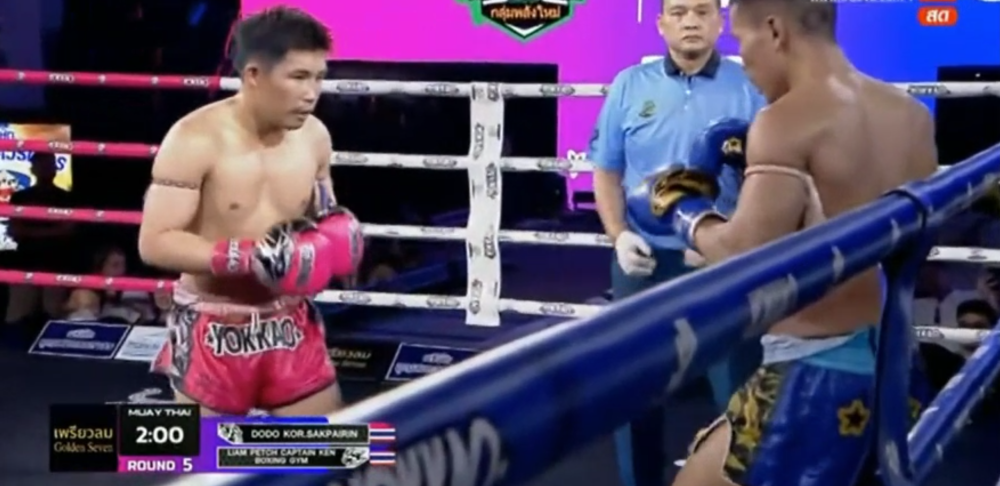
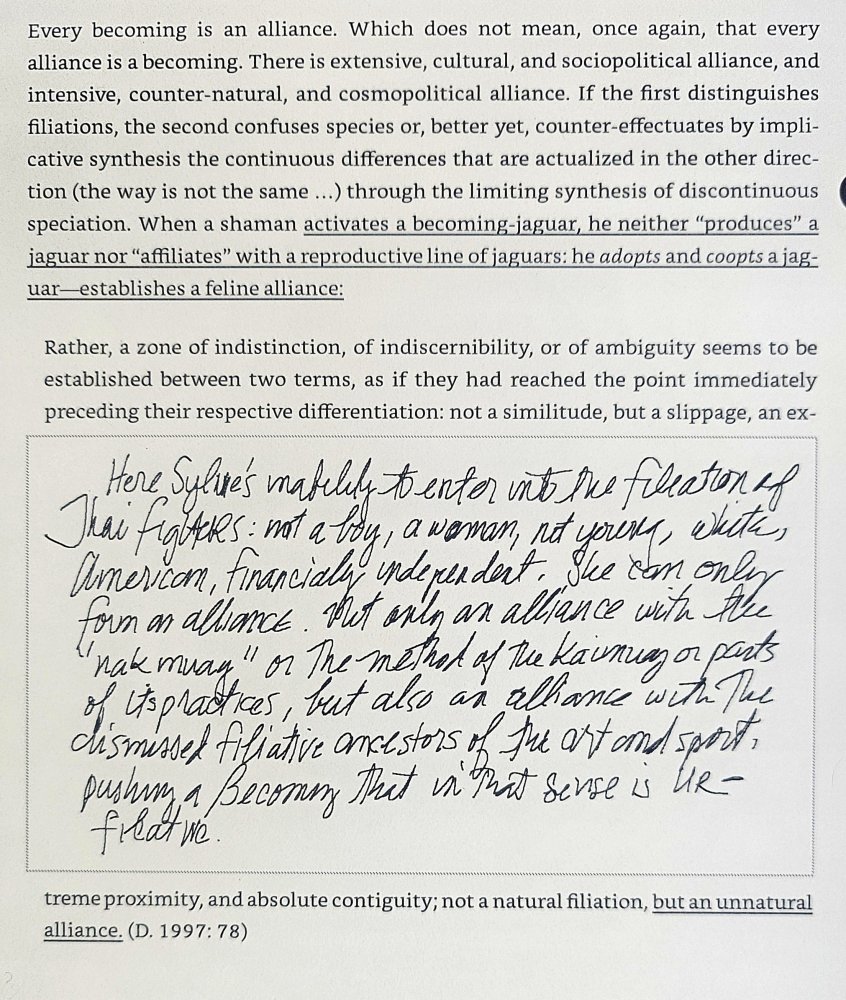
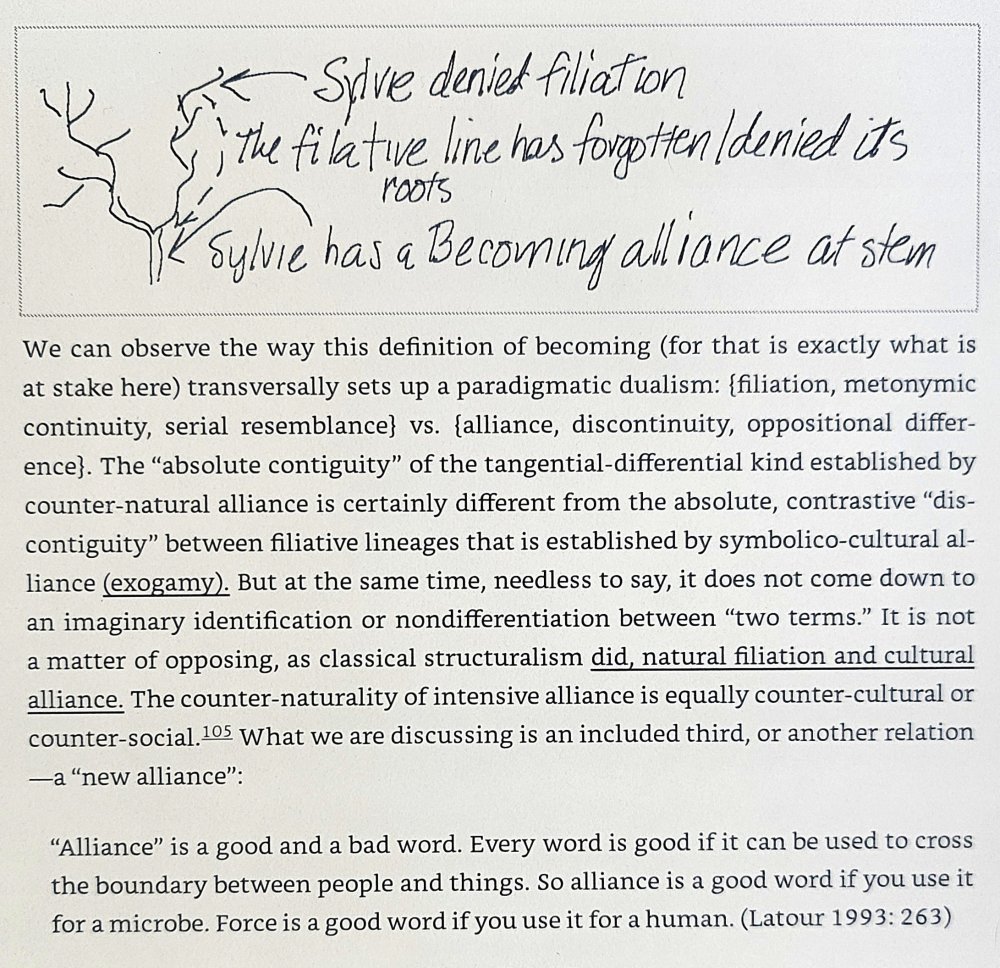
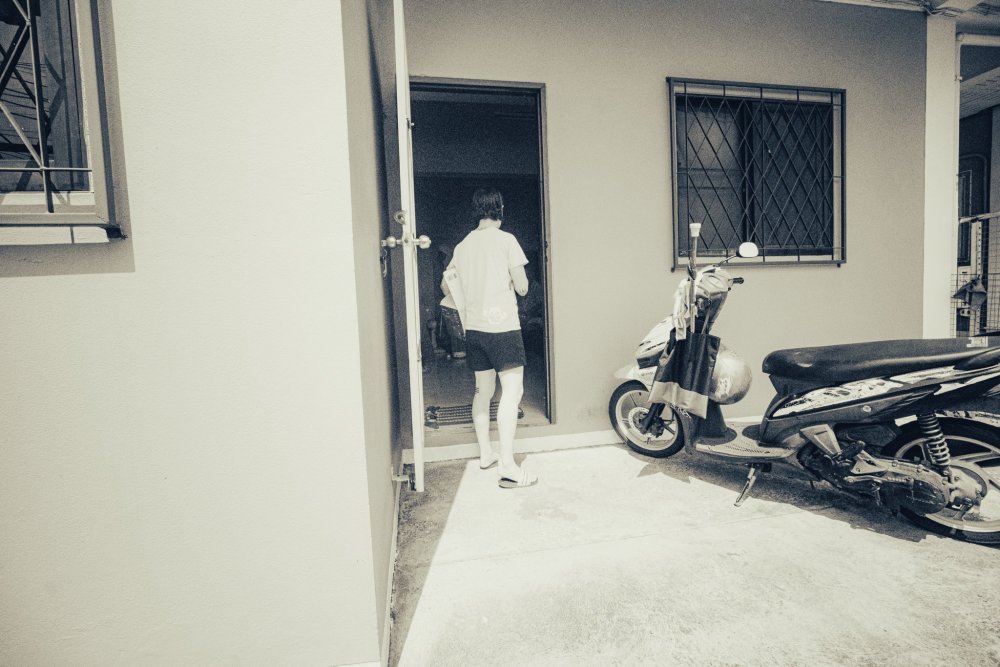
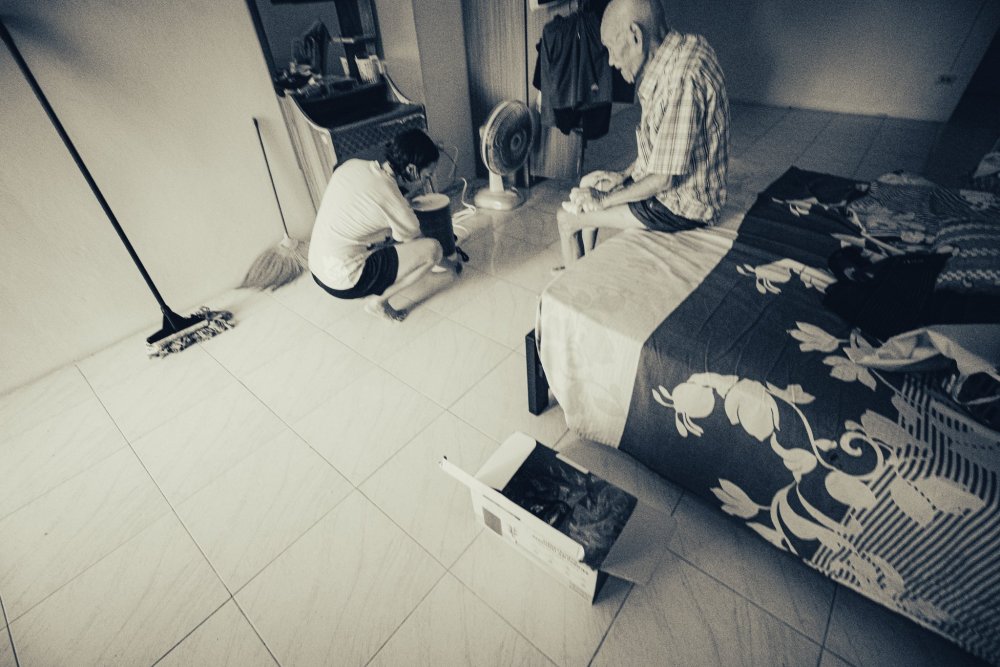
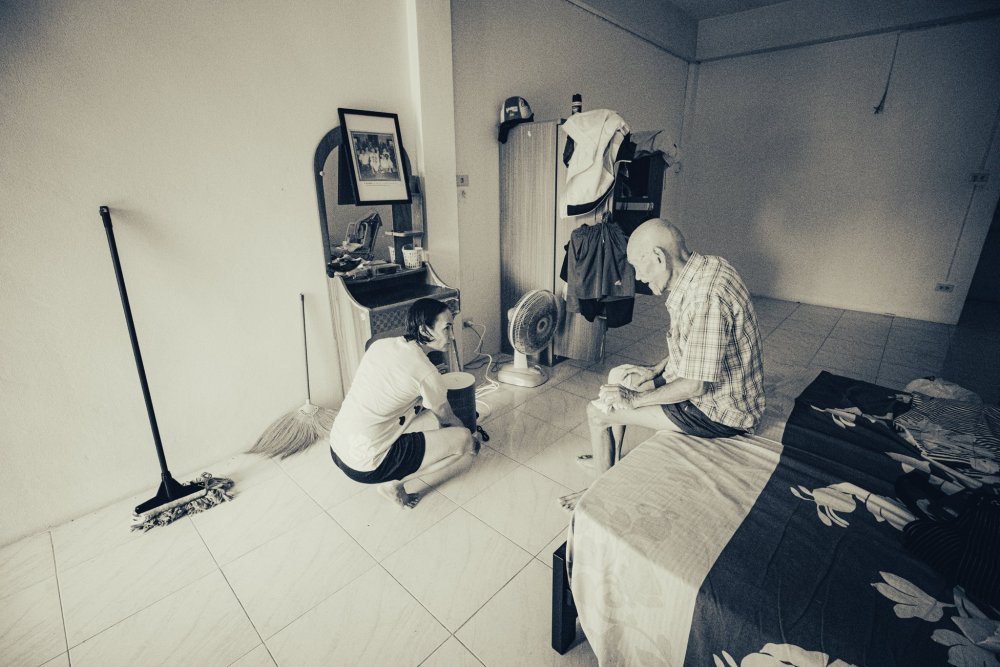
Journaling - Readings, Muay Thai, Concepts and Articulations
in Kevin's Corner - Muay Thai, Philosophy & Ethics
Posted
There is a Right Wing problem in adventure tourism in Thailand. This is very difficult to talk about because everything is heavily politicized/polarized, and the manosphere has long dovetailed with and supported combat sports, but this is far more pervasive than one would expect or even believe, occurring on several fronts. There is no easy way out of it, or even to avoid it, but becoming more aware is probably a good thing.